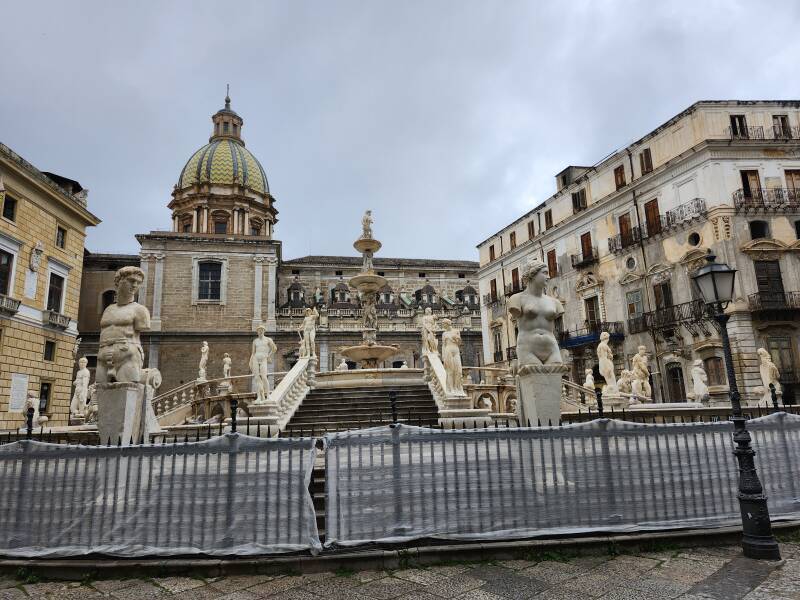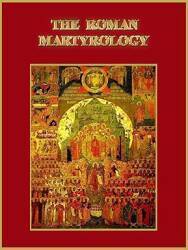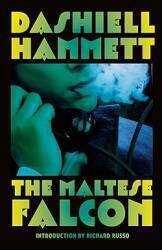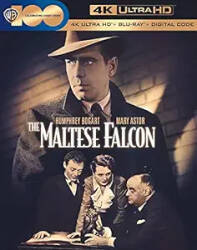
Palermo Cathedral and the Cappella Palatina
Churches along Corso Vittorio Emanuele
Corso Vittorio Emanuele
is the main street through an old center of Palermo.
Its intersection with Via Maqueda
at the intersection called Quattro Canti
divides the old city into four quarters.
Palermo Cathedral
is on that street.
We know that there was a basilica-style Christian church
here before the 9th century.
It was built using material from
an earlier Roman structure,
which may have been built on a Phoenician temple.
An Arab army of the Fatimid Caliphate
captured Palermo in 831 CE,
and converted the existing basilica-style church to a mosque.
Palermo became al-Madinah, "The City",
known as "the city of a thousand mosques".
It was the capital of an emirate and
a rival to Cairo and Cordoba in splendor.
The Arabs brought skilled craftsmen,
both Jewish and Muslim,
and built a fortress on the highest point in the city.
Then the Normans captured Sicily,
controlling the entire island by 1091.
They converted the mosque back into a church.
These were the same expanding Norse who had raided and
settled northern France, and in the same century
had crossed from France to take control of southern Britain.
The Normans also converted and expanded the Arab fortress
into what today is called Palazzo dei Normanni,
the Norsemen's Palace.
It contains the Cappella Palatina,
a church with elaborate mosaics and an intricate
muqarna ceiling.
Here are some pictures from points along the path in the
below map, largely following Corso Vittorio Emanuele:
Chiesa di Santa Ninfa dei Crociferi,
turning right at Quattro Canti,
then past
Chiesa di San Giuseppe dei Padri Teatini
and the Cathedral
to the Palazzo dei Normanni
and Cappella Palatina.
Chiesa di Santa Ninfa dei Crociferi
According to his legend, Tryphon of Campsada was a 3rd century Christian saint from Phrygia, in west-central Anatolia in today's Turkey. He was famously skilled as a healer of animals. Around the year 250 he was taken to Nicaea, tortured, and beheaded.
It used to be that 10 November was the feast day of Tryphon and two other saints, Respicius and Nympha, of whom far less is known. One tradition says that Nympha was a virgin martyr from Palermo who was put to death at the beginning of the fourth century. A different version of her legend is that when the Vandals invaded Sicily in the 440s, she fled from Palermo to the peninsula of Italy and died in the sixth century at Savona.
Chiesa di Santa Ninfa dei Crociferi or the Church of Saint Nympha of the Cross-Bearers is on Via Maqueda, one block north of Quattro Canti. It is one of the first buildings erected along this street after it was established. It is built in a Baroque-Mannerist style. The exterior is fairly plain, but the interior is Baroque.


This church belongs to an order founded by Camillus de Lellis in 1582 to minister to the sick and injured. They're known as the Camillians or as the Crociferi or the Crucifers because they were known for wearing cassocks with a red cross.
Construction of the church began in 1601, and Camillus attended its consecration. He is now the patron saint of the sick, hospitals, nurses, and physicians.

Tryphon is still listed in the Roman Martyrology, the Roman Catholic church's official list of martyrs, but Respicius and Nympha have been removed.
All the same, the feast of the translation of Nympha's relics is still celebrated on 19 August in Palermo.
And, Tryphon still has a feast day, now on 1 February.
As for Baroque architecture and decoration, which is so gaudy that it makes my head hurt, the style appeared in the early 1600s as a response to the Protestant Reformation. The Baroque style was meant to overwhelm the common people. It overwhelms me, just not in a good way.

Quattro Canti
The official name is Piazza Vigliena, but everyone calls this central intersection Quattro Canti. This intersection of Corso Vittorio Emanuele with Via Maqueda divides the old city into four quarters.

An urban plan was laid out in 1608–1620 on the orders of the Spanish Viceroys. The result included these two major streets intersecting in this eight-sided square. Four roads, and four equally tall buildings with concave Baroque façades. This was an early example of urban planning in Europe.
Each building has a fountain dedicated to one of the seasons, with a statue personifying that season. Above that is a niche with a statue of a Spanish ruler of Sicily. Above each ruler's statue is his coat of arms. At the top are statues of the four female patron saints of Palermo: Nympha, Christina, Olivia, and Agata.


Chiesa di San Giuseppe dei Padri Teatini
The southwest corner of Quattro Canti is formed by Chiesa di San Giuseppe dei Padri Teatini or the Church of Saint Joseph of the Theatine Fathers. It was built at the beginning of the 17th century.
The church has a large dome with a blue-and-yellow majolica covering. Majolica is tin-glazed pottery decorated with colors on a white background. The tin glazing creates a smooth, opaque, white surface. Colors are then painted onto the unfired white glazing using intensely colorful paints containing metallic oxides. The unfired white glaze absorbs the pigments as fresco does, preserving brilliant colors. The result is then fired in a kiln. Sicilians had been producing lead-glazed earthenwares. The Arabs then brought in the more colorful tin oxide technology during their rule of Sicily in 831–1060.
The old center of Palermo has narrow streets, most of them crooked. You have a poor view of a building's façade from the opposite side of the narrow street, and for some features you have to be further away and in exactly the right spot. Here is the view of the colorful majolica tile dome from the nearby Fontana Pretoria.

Other than the Corinthian columns flanking the main door, the exterior of the church is fairly plain. The interior, however, is Baroque. The floor plan is that of a basilica, with two rows of marble columns dividing a nave from two side aisles.


Corso Vittorio Emanuele
Corso Vittorio Emanuele is the main street of the city, known as Tarek el-kasr or "Way to the Castle" in Arab times, and Via Toledo under Spanish rule. It connected the port to the Arab-built fortress on the city's high point. About 500 meters west from Quattro Canti is the Cathedral of Palermo and the nearby Palazzo dei Normanni.
Part way along, Piazza Bologni is one of the oldest squares in Palermo. At its center is a statue of Charles V, who ruled as the Holy Roman Emperor from 1519 to 1556. Locals joke that the statue, erected in 1631, depicts Charles V indicating the height of the piles of uncollected garbage.

Speaking generally, the Holy Roman Empire was neither holy, nor Roman, nor an empire. But under Charles V, at least the part about being an empire was somewhat true. He ruled over the Netherlands and Spain, and therefore their overseas claims. With Spain, that included the Americas. It was an early version of an empire on which the sun never sets.

Dominions of the House of Hapsburg, meaning the lands ruled by Charles V, at his abdication in 1556, from Wikipedia.
Charles operated under the medieval concept of universal monarchy — he saw himself as the rightful ruler of the entire world. He had no single capital, he spent a quarter of his reign traveling within the realms he controlled. The statue depicts him in the garb of a triumphant Roman Emperor, and commemorates his multi-month stay in Sicily after his 1535 conquest of Tunis.
Charles waged almost constant wars defending the hegemony of the Holy Roman Empire from the Protestant Reformation, expansion of the Ottoman Empire, and France. He financed his wars by borrowing from German and Italian bankers, attempting to repay them with silver that Spain was extracting from the Americas. That was his plan, but inflation and massive debts resulted.
Even The Maltese Falcon referenced Charles' financial shenanigans.



Palermo Cathedral
The cathedral that you see today is the result of centuries of expansion, modification, and partial and approximate restoration. We know that there was a basilica-style church here during the years of Byzantine Greek control of Sicily, which began in the 530s CE. Tradition credits the 590–604 Papacy of Gregory I with its establishment. It used material from an earlier Roman temple.
The Arabs of the Fatimid Caliphate captured Palermo in 831 and converted the church into the Great Mosque of Bal'harm, as they called Palermo, the capital of a new emirate. They called this the "City of a Thousand Mosques", but this one was their primary mosque.
Then the Normans captured Sicily in the mid 11th century, capturing Palermo in 1072 and by 1091 controlling the entire island. They eventually converted the mosque back into a church.

Some of what you see today is from the Norman conversion. Walter Ophamil was a minister of Norman king William II and the archbishop of Palermo, and he is credited with the cathedral's re-conversion and re-establishment in 1185. Some of the towers and the large southern porch were built in the 14th and 15th centuries. Later renovations were done in 1781–1801. The result is a clutter of towers and turrets and crenelations and parapets and buttresses, with an anachronistically late central dome.

The large Gothic-Catalan style south porch or portico was added around 1465, in the early Renaissance. It's now the main entrance, opening onto the park-like piazza between the cathedral and the street.

The area above the three arches was carved and then painted to depict the Tree of Life. Islamic influence led to its complicated geometry. The full extent of this was only discovered during relatively recent restoration work.


Localized histogram equalization followed by increased saturation brings out some of the detail.

1076×610 region of image subjected to histogram equalization of each pixel based on its 100-pixel radius neighborhood and then increase of saturation, downsampled to 800×453.

1626×765 region of image subjected to histogram equalization of each pixel based on its 100-pixel radius neighborhood and then increase of saturation, downsampled to 800×376.
The columns of the portico were parts of a temple from the years of Roman rule of Sicily before the mid-400s CE. They were reused to build the Byzantine basilica, and then modified when the church was converted to a mosque.
The left-most column has a carved plaque with an Arabic inscription. It's a passage from the seventh Surah of the Quran:
Your Lord is God; He who created the heavens and the earth in six days, then established Himself on the Throne. The night overtakes the day, as it pursues it persistently; and the sun, and the moon, and the stars are subservient by His command. His is the creation, and His is the command. Blessed is God, Lord of all beings.
The column was then moved and reused without modification when the porch was added almost three centuries after the Norman renovations. Why not — the passage would be equally appropriate on a mosque, a church, or a synagogue.

The western entrance largely retains its appearance from the 14th and 15th centuries.
The Gothic portal is flanked by two towers. Two arches cross the street to connect the western façade to the bell tower and the Archbishop's Palace, which is now the Diocesean Museum.


The east end, on which you can see the apses of the nave and the aisles, is almost entirely original 12th century work.

Palazzo dei Normanni and Cappella Palatina
The Phoenicians, whom the Romans and therefore British academics called the Punic people, had established Palermo around 750 BCE. They first settled around the excellent natural harbor, but they built a fortified structure on a slightly higher point about a kilometer inland.
The Arab rulers of 831–1091 built their fortress there. It was a kasr, not just a castle but specifically a military fortress.
After the Normans took control of Palermo in 1072, they began large-scale reconstruction and expansion of the Arab kasr. The result was a large fortress that was also a royal residence and center for the ruler's government. And, a new name, Palace of the Normans, appearing on current local maps as Palazzo dei Normanni.
Roger II had become Count of Sicily in 1105 when he was just ten years old, so his mother was in charge as regent. He grew into counthood, and then became Duke of Apulia and Calabria collectively (the southern third of the Italian peninsula) in 1127.
Pope Honorius II died in early 1130 and so there was a Papal conclave to select his successor. The hastily assembled conclave did its business too quickly. Innocent II was elected by just six cardinals who had been rounded up in a rush by supporters of Innocent II. The cardinals who had been left out in the hurry then organized their own conclave and elected Anacletus II.
The Avignon Papacy and periods of competing PopesAnacletus' supporters took control of Rome while Innocent fled north by ship via Pisa and Genova to France. Anacletus settled in as Pope while Innocent continued his journey to build support to denounce Anacletus as an invalid Antipope. King Lothair III of Germany and King Henry I of England joined the pro-Innocent movement, to the point that Lothair mounted an unsuccessful attempt to dislodge Anacletus by force.
Meanwhile, Roger had supported Anacletus, who returned the favor by Papally crowning him as King Roger II of Sicily.
Innocent organized the Council of Pisa in 1135, and had it declare Anacletus and his supporters to be excommunicated. Lothair make a second trip to Rome but again failed to get Anacletus out of the Vatican.
Anacletus finally died in January 1138, and Innocent was now widely recognized as Pope Innocent II. He organized the Second Lateran Council, which excommunicated Roger for having supported the other guy. A year later, Roger's son, Roger III of Apulia, organized a force of a thousand knights, ambushed the Papal Troops, and captured Innocent. He quickly signed a treaty acknowledging the kingship and possessions of Roger II and also un-excommunicated him.
Back to Roger's coronation and early reign — in 1132 he started construction of the Cappella Palatina or Palatine Chapel within the Palace of the Normans. It would be built on top of an older chapel built around 1080, which now serves as a crypt. It incorporates several explicit symbols of Roger's multi-cultural and multi-faith realm. That's in addition to its mixture of Byzantine, Norman, and Fatimid architectural styles. Structurally, it was completed in 1140, but decades later they were still finishing the mosaics.
You continue up Corso Vittorio Emanuele past the cathedral to Porta Nuova to reach the palace. A gate was built here in 1460. After Charles V captured Tunis from the Ottoman Turks, he came to Palermo and made his grand entrance through this gate in 1535. Since he would have arrived at the port, and the gate is on the opposite side of town, inland, his "entrance" through this gate was a contrived affair. The Senate of Palermo decreed that the gate must be rebuilt in a more sumptuous style befitting the Emperor's passage through it. That finally happened in 1583–1584, twenty-six years after Charles V died. Then, on 20 December 1667, a lightning strike during a winter thunderstorm blew up the gunpowder stores, destroying the gate. So, what you see now is the replacement built in 1669, the 43-meter-tall Porta Nuova or the New Gate.

You buy your ticket and enter the palace, then go up a wide staircase from an internal courtyard.

Fez
A marble panel is inscribed in Greek, Latin, and Arabic, documenting a water clock that was built for Roger II. He probably got it from Fez, where many such devices were built. It's another example of the multi-cultural situation in Sicily under Arab and then Norman rule.

Each level overlooking the courtyard is a loggia, a covered exterior gallery. The Palatine Chapel is on the first rather tall level above the courtyard. A row of columns and arches forms a sort of portico along the right side of the chapel, you enter its narthex at its right rear.

The chapel, dedicated to Saint Peter, is laid out like a domed basilica with a nave and two aisles, each with its own apse. The columns were recovered from a Roman structure and reused. There are pointed arches between the columns along each side of the central nave.

The wooden ceiling of the nave is formed from muqarnas, a pattern of niche-like cells in a geometric framework with multiple axes of symmetry.
The muqarna design was probably developed first in Baghdad in the 11th century CE and then rapidly spread across the Islamic world from there. Examples in Persia, Syria, upper Egypt, and central Asia appeared almost simultaneously. Its use a century later in a Christian chapel shows the strong Fatimid influence here.

The mosaics with Greek inscriptions were created during the 1140s, probably by artists from Constantinople. The cruder ones with Latin inscriptions are dated to the 1160s and 1170s, and were probably made by local craftsmen.




Some scholars theorize that Roger had the ceiling built from wood as a reference to Solomon's cedar-roofed palace in Jerusalem, thus claiming his divine right to rule as the most eminent representative of heaven on earth.

The eight-pointed star is a typical Islamic design. But they can be arranged to form a Christian cross.





Marrakech
For more intricate muqarnah ceilings and archways, see the imperial cities in Morocco, especially the Saadian tombs in Marrakech.





The repeating geometric patterns are very much like the zellij tilework in Morocco. The zellij design was probably derived from Byzantine mosaics and used in Islamic architecture across Fatimid North Africa starting in the century before Roger built this chapel.

To continue along the path of my trip, from Palermo I took a train to Milazzo, stayed there overnight, and the next day continued by ferry to Vulcano.
Where Next In Italy?
( 🚧 = under construction )
In the late 1990s into the early 2000s I worked on a project to
scan cuneiform tablets
to archive and share 3-D data sets,
providing enhanced visualization to assist reading them.
Localized histogram equalization
to emphasize small-scale 3-D shapes in range maps, and so on.
I worked on the project with Gordon Young,
who was Purdue University's only professor
of archaeology.
Gordon was really smart,
he could read both Sumerian and Akkadian,
and at least some of other ancient languages
written in the cuneiform script.
He told me to go to Italy,
"The further south, the better."
Gordon was right.
Yes, you will very likely arrive in Rome,
but Italy has domestic flights and a fantastic train system
that runs overnight sleepers all the way to
Palermo and Siracusa, near the western and southern corners
of Sicily.
So, these pages are grouped into a south-first order,
as they should be.



